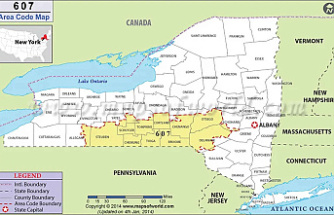Two days before the Trump administration authorized an easement for the Dakota Access pipeline to cross a reservoir near the Standing Rock Sioux Tribe reservation, the U.S. Division of the Interior withdrew a legal opinion that concluded there was “ample legal justification” to deny it.
The withdrawal of the opinion was revealed in court documents filed this week by U.S. Army Corps of Engineers, the identical agency that requested the assessment late last year.
“A pattern is emerging with [the Trump] administration,” mentioned Jan Hasselman, an lawyer representing the Standing Rock Sioux Tribe. “They take excellent, thoughtful operate and then just throw it in the trash and do what ever they want to do.”
The 35-web page legal evaluation of the pipeline’s prospective environmental dangers and its impact on treaty rights of the Standing Rock Sioux and other indigenous tribes was authored in December by then-Interior Department Solicitor Hilary C. Tompkins, an Obama appointee who was -- at the time -- the top lawyer in the department.
“The government-to-government connection amongst the United States and the Tribes calls for enhanced engagement and sensitivity to the Tribes' concerns,” Tompkins wrote. “The Corps is accordingly justified must it decide on to deny the proposed easement.”
Tompkins’ opinion was dated Dec. four, the exact same day the Obama administration announced that it was denying an easement for the controversial crossing and initiating an environmental impact statement that would explore alternative routes for the pipeline. Tompkins did not respond to a request by ABC News to discuss her evaluation or the decision produced to withdraw it.
On his second weekday in workplace, President Donald Trump signed a memorandum that directed the Army Corps of Engineers to “review and approve” the pipeline in an expedited manner, to "the extent permitted by law, and as warranted, Avrupabet and with such circumstances as are required or suitable." “I believe that building and operation of lawfully permitted pipeline infrastructure serve the national interest,” Trump wrote in the memo.
Two weeks later, the Corps issued the easement to Dakota Access and the environmental review was canceled.
The corporation behind the pipeline project now estimates that oil could be flowing in the pipeline as early as March six.
The evaluation by Tompkins incorporates a detailed evaluation of the tribes’ hunting, fishing and water rights to Lake Oahe, the federally controlled reservoir where the final stretch of the pipeline is presently being installed, and concludes that the Corps “must take into account the probable impacts” of the pipeline on these reserved rights.
“The Tompkins memo is potentially dispositive in the legal case,” Hasselman stated. "It shows that the Army Corps [below the Obama administration] made the appropriate selection by placing the brakes on this project till the Tribe’s treaty rights, and the danger of oil spills, was fully evaluated."
Tompkins’ opinion was specifically essential of the Corps’ selection to reject a different prospective route for the pipeline that would have placed it just north of Bismarck, North Dakota, in part because of the pipeline’s proximity to municipal water provide wells.
“The Standing Rock and Cheyenne River Sioux Reservations are the permanent and irreplaceable homelands for the Tribes,” Tompkins wrote. “Their core identity and livelihood rely upon their connection to the land and atmosphere -- as opposed to a resident of Bismarck, who could basically relocate if the [Dakota Access] pipeline fouled the municipal water supply, Tribal members do not have the luxury of moving away from an environmental disaster with out also leaving their ancestral territory.”
Kelcy Warren, the CEO of Energy Transfer Partners, the corporation behind the project, has stated that “concerns about the pipeline’s impact on neighborhood water supply are unfounded” and “multiple archaeological studies carried out with state historic preservation offices found no sacred items along the route.”
The selection to temporarily suspend Tompkins' legal opinion two days ahead of the easement was authorized was outlined in a Feb. 6 internal memorandum issued by K. Jack Haugrud, the acting secretary of the Division of the Interior. A spokeswoman for the division told ABC News these days that the opinion was suspended so that it could be reviewed by the department.
The Standing Rock Sioux and Cheyenne River Sioux Tribes are continuing their legal challenges to the pipeline. A motion for a preliminary injunction will be heard on Monday in federal court in Washington, D.C.
The Corps has maintained, throughout the litigation, that it produced a superior faith work to meaningfully seek the advice of with the tribes.
The tribes contend, nonetheless, that the Trump administration’s cancellation of the environmental evaluation and its reversal of prior agency choices are “baldly illegal.”
“Agencies cannot merely disregard their personal findings, and ‘withdrawing’ the Tompkins memo doesn’t transform that,” Hasselman stated. “We have challenged the legality of the Trump administration reversal and we believe we have a powerful case.”
Our editors found this article on this site using Google and regenerated it for our readers.












